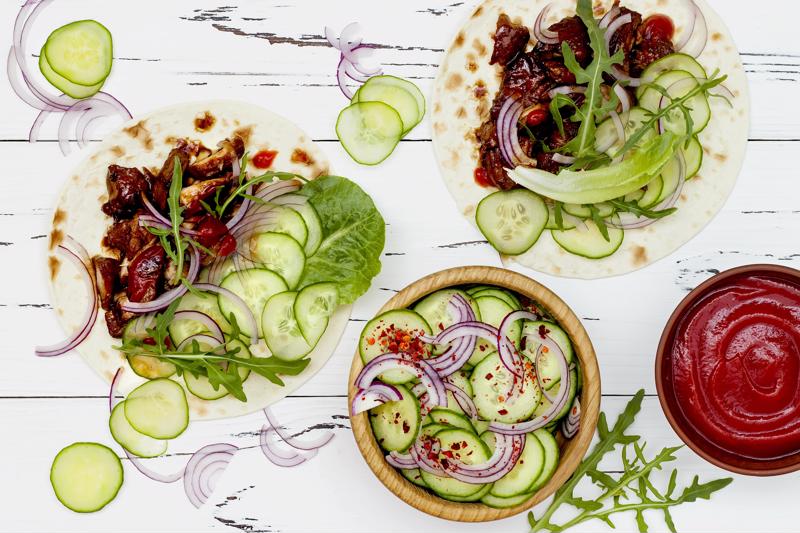Fusion cuisine as a distinct, unique concept is relatively new in the world of chefs and foodservice professionals. The modern concept of, if not the specific phrase "fusion food" likely traces back to the 1970s, an archival article from The New York Times explained. However, the idea of bringing together ingredients from different cultures and merging recipes likely dates back to the beginning of trade between different regions, The Smithsonian said. Spaghetti, it pointed out, was perfected by Chinese chefs before it ever made its way to Italy (and tomatoes were only added to European cuisine after colonizers reached North America).
Understanding how fusion cuisine has evolved as a concept can help students in Boulder culinary schools develop a sense for crafting their own dishes and expertly preparing popular, existing recipes.
 Fusion cuisine should focus on a delicious final result.
Fusion cuisine should focus on a delicious final result.The basics of fusion cuisine
Fusion food doesn't have strict definitions or a canon of standard dishes that can't be deviated from. That isn't to say popular, common dishes don't exist in the realm of fusion cuisine, just that experimentation is common and valued. Fusion food can mean everything from the traditional Chinese dishes adapted for American palates more than 100 years ago and now served in Chinese restaurants, to combinations of food from nearby countries or from two cultures on opposite ends of the globe.
Students in Boulder can see fusion food in action at a variety of restaurants, including Fuji Cafe. This family-owned eatery combines Japanese and Nepalese, also called Sherpa, food. With a focus on healthy and inexpensive recipes, Fuji Cafe offers onigiri (Japanese rice balls) with a wide range of ingredients, alongside curries, Nepalese momo dumplings and a variety of other foods. This source of local fusion cuisine can offer some inspiration for creating dishes of your own.
The current state of fusion food
Ingredient and equipment distributor PreGel provided a reminder of the "con-fusion" era of fusion food during this cuisine's mainstream boom period in the 1990s. Some chefs looking to tap into this trend and customers' appetites for it focused more on unexpected flavor combinations than effective combinations of them. This led to less than stellar results, which discouraged some chefs – and diners – in terms of fusion food. This understanding of what's truly important in terms of fusion cuisine, taste as opposed to novelty, can serve current and future chefs well as they look to develop their own recipes.
We've looked at some guidelines for building fusion recipes in the past, including a willingness to experiment, recognize failures and adapt as well as incorporating your own favorite ingredients into the mix. This approach speaks to the current state of fusion cuisine: A very open and accepting category of food, one that offers a broad tent to chefs who are willing to develop recipes into something that their customers will enjoy. This last point is especially important. Context is vital when it comes to a successful fusion recipe. If you know what the customer base at your restaurant enjoys and can create fusion recipes accordingly, you're off to a great start.
A firm grasp of culinary skills goes a long way toward developing effective, appealing fusion dishes. The Auguste Escoffier School of Culinary Arts offers students the chance to develop their abilities under the close tutelage of experienced professional chefs, both in terms of their work directly with food and the many business and managerial aspects of being a professional chef. To learn more about opportunities at our Colorado culinary school, get in touch with us today.

